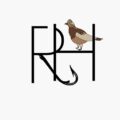
As a young 19 year old who has been introduced to all sorts of fish and game, the Ruffed Grouse is one creature that stands out from all the others. Maybe it’s because the whole experience of grouse hunting is nostalgic to me. The whole deal of driving north to a small, rural town and spending a few nights camping or in a hotel, and also having breakfast at the small diner in town before heading out into the quiet and crisp fall air with the smell of dead leaves. But even though I know that this nostalgia plays a big part, there is a lot more to the experience of chasing “the king” of all game birds.
I was fortunate enough to be introduced to grouse hunting by my father who started hunting before I was born and therefore I was hooked at a very young age. But as I have grown older, I have come to realize that not everyone had that luxury. In fact, barely anyone knows what grouse are, let alone hunts for them. Grouse are my all time favorite game to pursue for many reasons, but learning where and how to hunt for them can be quite overwhelming. Hopefully by the end of this article you will have all the knowledge you need to get started.
Where to hunt (Habitat)
If you have never targeted grouse before, this first topic is going to be a bitter one. To hide from their natural predators (mostly birds of prey) grouse spend most of their time in some of the thickest cover they can find, so get ready to walk through some of the thickest forests. If you are new to grouse, I would suggest starting by scouting out areas you can hunt by looking for these three things:
- The right aged logging cuts
This means you look for areas that were clear cut about 8-12 years ago. The trees here will tend to be 10-30 feet tall.
- A mix of trees
I tend to find good numbers of grouse in areas that have a mix of different kinds of trees such as young aspen, oaks, beeches and conifers. Straight aspen cuts can also be productive, but I have had my best results in mixed areas.
- Look for shade
Shade is a great indicator that the forest floor is very protected. If you see an area with more shade than all the others, it’s most likely worth trying.
How to start your first hunt

If you are just getting into grouse hunting, I would assume that you do not have a hunting dog which is ok. If you are by yourself, I would suggest getting onto the road that runs along the thick cover you found. Start by cutting into the cover a little ways, but make sure that you can still see the road (just to make navigation easier). From there, walk parallel with the road. Don’t make too much noise but don’t be silent either. You want to make enough noise to flush any birds that are near you, but you don’t want to give birds that are far away a heads up. If you have more than one person, get in a parallel line and all work forward. It is also a good idea to have your outside guys a little ahead, that way birds can’t escape off to the side as easily. Besides this, much of your knowledge will come from experience.
Food and water sources
Personally, I don’t worry about food or water sources until I’m struggling to find birds. Grouse eat a ton of different things so most of the time it’s not hard for them to find food, especially in the early season. Water is a little bit more important. On years when there is consistent moisture, grouse can get water just about anywhere. They get all their water from dew and moisture that is in their food. But not all years make it this simple. For example, this season (2024) has been very dry so far. Most years I have come out of the woods soaked in dew, especially in the morning. But this year I have noticed I have been bone-dry all day. Because of this, I have found birds in slightly different areas. The most productive areas I have hunted this year have been lowlands. Not quite marshes, but the dirt is dark and a little mushy. I also had a stand-out spot this year that was right along a small creek.
If you are hunting areas with fantastic cover that has plenty of water and you still aren’t finding birds, looking for areas with a plethora of food may be your last resort. Grouse eat all kinds of things such as berries, leaves, buds and nuts. Early to mid season, I have mostly found they like berries and green leaves that grow on the forest floor. Autumn olives and wintergreen are a great thing to look for. Late season they eat a lot of buds off of trees, especially aspen.I hope that this article has given you a good idea on how to get started grouse hunting. I would say that 80% of knowledge in this field comes from nothing but experience. So get out there in the north woods and have a blast!
